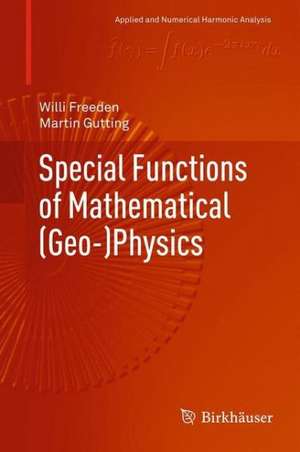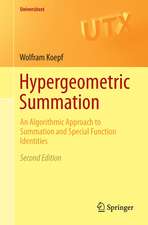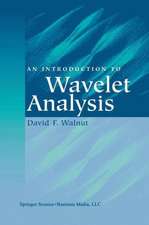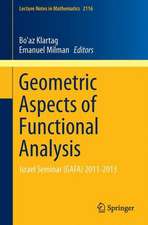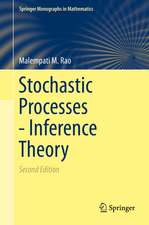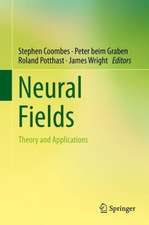Special Functions of Mathematical (Geo-)Physics: Applied and Numerical Harmonic Analysis
Autor Willi Freeden, Martin Guttingen Limba Engleză Hardback – 26 feb 2013
| Toate formatele și edițiile | Preț | Express |
|---|---|---|
| Paperback (1) | 786.31 lei 6-8 săpt. | |
| Springer – 8 feb 2015 | 786.31 lei 6-8 săpt. | |
| Hardback (1) | 653.98 lei 6-8 săpt. | |
| Springer – 26 feb 2013 | 653.98 lei 6-8 săpt. |
Din seria Applied and Numerical Harmonic Analysis
-
 Preț: 399.29 lei
Preț: 399.29 lei - 20%
 Preț: 673.02 lei
Preț: 673.02 lei - 17%
 Preț: 431.76 lei
Preț: 431.76 lei - 19%
 Preț: 443.08 lei
Preț: 443.08 lei -
 Preț: 412.57 lei
Preț: 412.57 lei - 15%
 Preț: 550.04 lei
Preț: 550.04 lei - 18%
 Preț: 1014.28 lei
Preț: 1014.28 lei - 15%
 Preț: 647.92 lei
Preț: 647.92 lei -
 Preț: 413.37 lei
Preț: 413.37 lei - 15%
 Preț: 648.74 lei
Preț: 648.74 lei - 15%
 Preț: 654.77 lei
Preț: 654.77 lei - 15%
 Preț: 636.80 lei
Preț: 636.80 lei - 15%
 Preț: 532.89 lei
Preț: 532.89 lei - 15%
 Preț: 646.62 lei
Preț: 646.62 lei - 15%
 Preț: 653.98 lei
Preț: 653.98 lei -
 Preț: 397.38 lei
Preț: 397.38 lei - 15%
 Preț: 656.43 lei
Preț: 656.43 lei - 15%
 Preț: 661.97 lei
Preț: 661.97 lei - 18%
 Preț: 957.13 lei
Preț: 957.13 lei - 24%
 Preț: 829.74 lei
Preț: 829.74 lei -
 Preț: 398.35 lei
Preț: 398.35 lei - 20%
 Preț: 569.86 lei
Preț: 569.86 lei -
 Preț: 392.21 lei
Preț: 392.21 lei - 18%
 Preț: 1121.76 lei
Preț: 1121.76 lei - 18%
 Preț: 1001.32 lei
Preț: 1001.32 lei -
 Preț: 387.75 lei
Preț: 387.75 lei - 15%
 Preț: 653.98 lei
Preț: 653.98 lei - 20%
 Preț: 567.32 lei
Preț: 567.32 lei - 20%
 Preț: 573.77 lei
Preț: 573.77 lei -
 Preț: 406.80 lei
Preț: 406.80 lei -
 Preț: 387.38 lei
Preț: 387.38 lei - 5%
 Preț: 1168.71 lei
Preț: 1168.71 lei -
 Preț: 400.85 lei
Preț: 400.85 lei -
 Preț: 398.15 lei
Preț: 398.15 lei - 15%
 Preț: 644.49 lei
Preț: 644.49 lei - 19%
 Preț: 575.84 lei
Preț: 575.84 lei - 15%
 Preț: 703.71 lei
Preț: 703.71 lei - 20%
 Preț: 334.71 lei
Preț: 334.71 lei - 15%
 Preț: 525.54 lei
Preț: 525.54 lei -
 Preț: 405.06 lei
Preț: 405.06 lei - 15%
 Preț: 536.96 lei
Preț: 536.96 lei
Preț: 653.98 lei
Preț vechi: 769.39 lei
-15% Nou
Puncte Express: 981
Preț estimativ în valută:
125.15€ • 135.90$ • 105.13£
125.15€ • 135.90$ • 105.13£
Carte tipărită la comandă
Livrare economică 22 aprilie-06 mai
Preluare comenzi: 021 569.72.76
Specificații
ISBN-13: 9783034805629
ISBN-10: 3034805624
Pagini: 520
Ilustrații: XV, 501 p. 37 illus., 18 illus. in color.
Dimensiuni: 155 x 235 x 33 mm
Greutate: 0.79 kg
Ediția:2013
Editura: Springer
Colecția Birkhäuser
Seria Applied and Numerical Harmonic Analysis
Locul publicării:Basel, Switzerland
ISBN-10: 3034805624
Pagini: 520
Ilustrații: XV, 501 p. 37 illus., 18 illus. in color.
Dimensiuni: 155 x 235 x 33 mm
Greutate: 0.79 kg
Ediția:2013
Editura: Springer
Colecția Birkhäuser
Seria Applied and Numerical Harmonic Analysis
Locul publicării:Basel, Switzerland
Public țintă
Upper undergraduateCuprins
1 Introduction: Geomathematical Motivation.- Part I: Auxiliary Functions.- 2 The Gamma Function.- 3 Orthogonal Polynomials.- Part II: Spherically Oriented Functions.- 4 Scalar Spherical Harmonics in R^3.- 5 Vectorial Spherical Harmonics in R^3.- 6 Spherical Harmonics in R^q.- 7 Classical Bessel Functions.- 8 Bessel Functions in R^q.- Part III: Periodically Oriented Functions.- 9 Lattice Functions in R.- 10 Lattice Functions in R^q.- 11 Concluding Remarks.- References.- Index.
Recenzii
From the book reviews:
“This is an erudite and competent book of great value, not only to specialists in the field. It should be very useful for both advanced students and active researchers in the field of geomathematics, geophysics, and geoengineering, and also for geooriented applied mathematicians. The style is superb and clear, and the organization is very well planned. I believe this excellent book should be required reading for all earth-oriented scientists.” (Andrzej Icha, Pure and Applied Geophysics, Vol. 172, 2015)
“This book provides an accessible and modern approach to special functions and applications to geomathematics, applied mathematics, environmental and engineering sciences. … this will create new interest and useful leads for those engaged in the advanced study and research in special functions and their applications. … book will continue to be very useful as a graduate level text and an interdisciplinary research reference for professionals in applied mathematics, geomathematics and harmonic analysis. … this book is a new and excellent addition to the mathematics literature.” (L. Debnath, Mathematical Reviews, October, 2013)
“This is an erudite and competent book of great value, not only to specialists in the field. It should be very useful for both advanced students and active researchers in the field of geomathematics, geophysics, and geoengineering, and also for geooriented applied mathematicians. The style is superb and clear, and the organization is very well planned. I believe this excellent book should be required reading for all earth-oriented scientists.” (Andrzej Icha, Pure and Applied Geophysics, Vol. 172, 2015)
“This book provides an accessible and modern approach to special functions and applications to geomathematics, applied mathematics, environmental and engineering sciences. … this will create new interest and useful leads for those engaged in the advanced study and research in special functions and their applications. … book will continue to be very useful as a graduate level text and an interdisciplinary research reference for professionals in applied mathematics, geomathematics and harmonic analysis. … this book is a new and excellent addition to the mathematics literature.” (L. Debnath, Mathematical Reviews, October, 2013)
Notă biografică
Willi Freeden: Studies in mathematics, geography, and philosophy at the RWTH Aachen, 1971 Diplom in mathematics, 1972 Staatsexamen in mathematics and geography, 1975 PhD in mathematics, 1979 Habilitation in mathematics, 1981/1982 visiting research professor at The Ohio State University, Columbus (Department of Geodetic Science and Surveying), 1984 professor of mathematics at the RWTH Aachen (Institute of Pure and Applied Mathematics), 1989 professor of technomathematics (industrial mathematics), 1994 head of the Geomathematics Group, 2002–2006 vice-president for Research and Technology at the University of Kaiserslautern, 2009 editor in chief of the International Journal on Geomathematics (GEM), 2010 editor of the Handbook of Geomathematics, member of the editorial board of seven international journals.
Martin Gutting: Studies in mathematics at the University of Kaiserslautern, 2003 Diplom in mathematics, focus on geomathematics , 2007 PhD in mathematics, postdoc researcherat the University of Kaiserslautern, lecturer in the course of geomathematics (in particular for constructive approximation, special functions, and inverse problems), 2011 lecturer for engineering mathematics at the University of Kaiserslautern and DHBW Mannheim.
Martin Gutting: Studies in mathematics at the University of Kaiserslautern, 2003 Diplom in mathematics, focus on geomathematics , 2007 PhD in mathematics, postdoc researcherat the University of Kaiserslautern, lecturer in the course of geomathematics (in particular for constructive approximation, special functions, and inverse problems), 2011 lecturer for engineering mathematics at the University of Kaiserslautern and DHBW Mannheim.
Textul de pe ultima copertă
Special functions enable us to formulate a scientific problem by reduction such that a new, more concrete problem can be attacked within a well-structured framework, usually in the context of differential equations. A good understanding of special functions provides the capacity to recognize the causality between the abstractness of the mathematical concept and both the impact on and cross-sectional importance to the scientific reality.
The special functions to be discussed in this monograph vary greatly, depending on the measurement parameters examined (gravitation, electric and magnetic fields, deformation, climate observables, fluid flow, etc.) and on the respective field characteristic (potential field, diffusion field, wave field). The differential equation under consideration determines the type of special functions that are needed in the desired reduction process.
Each chapter closes with exercises that reflect significant topics, mostly in computational applications. As a result, readers are not only directly confronted with the specific contents of each chapter, but also with additional knowledge on mathematical fields of research, where special functions are essential to application. All in all, the book is an equally valuable resource for education in geomathematics and the study of applied and harmonic analysis.
Students who wish to continue with further studies should consult the literature given as supplements for each topic covered in the exercises.
The special functions to be discussed in this monograph vary greatly, depending on the measurement parameters examined (gravitation, electric and magnetic fields, deformation, climate observables, fluid flow, etc.) and on the respective field characteristic (potential field, diffusion field, wave field). The differential equation under consideration determines the type of special functions that are needed in the desired reduction process.
Each chapter closes with exercises that reflect significant topics, mostly in computational applications. As a result, readers are not only directly confronted with the specific contents of each chapter, but also with additional knowledge on mathematical fields of research, where special functions are essential to application. All in all, the book is an equally valuable resource for education in geomathematics and the study of applied and harmonic analysis.
Students who wish to continue with further studies should consult the literature given as supplements for each topic covered in the exercises.
Caracteristici
Presents special functions as essential tools contributing to solutions for geoscientific problems Attractive textbook for the education in geomathematics Addresses mathematicians, physicists, geo-engineers and geoscientists Includes supplementary material: sn.pub/extras
